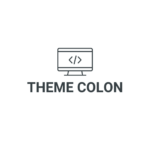In the digital age, a career in web design has never been more relevant. It’s a dynamic field that combines creativity with technical skills, offering a rewarding and ever-evolving career path.
Web designers are the architects of the online world, shaping how we interact with the internet on a daily basis. They’re responsible for creating visually appealing and user-friendly websites that cater to the needs of businesses and consumers alike.
Whether you’re considering a career shift or just starting out, this article provides an insightful look into the world of web design careers. It’s time to explore the opportunities and challenges that await in this exciting field.
Web Design Careers

Delving into web design careers brings to light a synthesis of creativity and technical prowess, opening avenues of opportunities.
Web design, in essence, incorporates a variety of skills that culminate in the production and maintenance of websites. It spans several aspects of web creation, including, but not limited to, graphic design, interface design, and user experience design. Primarily, it’s the web designer’s job to ensure sites are visually compelling and highly intuitive for visitors. They create the layout, integrate graphics, and decide on fonts and colors as well, all directed towards a website that’s inviting, user-centric and in line with the client’s objectives.
Career Opportunities in Web Design
A career in web design offers extensive options. Web designers can branch out into various roles such as UI/UX designers, graphics designers, interaction designers, or digital designers. Depending on the role, they can find themselves working in a plethora of industries, from tech start-ups, marketing agencies, and media companies, to governmental or non-profit organizations. In addition, working as a freelance web designer is also a feasible choice, granting high levels of flexibility and autonomy. Distinctively, the growth of the digital economy heightens the demand for web designers, enhancing career prospects and security.
Trends Influencing Web Design Careers

Shaping the trajectory of web design careers are notable trends such as technological advancements and shifts in industry demand. These changes have significant impacts on the job outlook and growth prospects for web design professionals.
Technological Advancements
Technological advancements are catalysts for change, driving the evolution of web design. As technology continues to evolve, so too do the tools and methodologies used by web designers. For instance, artificial intelligence (AI) has introduced avenues like automated web design, significantly changing the landscape of traditional web design. Moreover, the popularity of mobile platforms has compelled designers to adopt responsive design techniques to ensure seamless user experience across multiple devices.
Advancements in coding technologies such as HTML5 and CSS3 have given designers more scope to flex their creative muscles, allowing more dynamic and interactive designs. These new technologies, coupled with advancements in design software like Adobe Suite, offer web designers opportunities to create more visually stunning, engaging, and navigable websites.
Industry Demand and Job Outlook

The demand for web design professionals is on the upswing. As businesses continue to understand the significance of having an online presence, the need for sophisticated websites grows. According to the Bureau of Labor Statistics, employment opportunities for web developers and digital designers are projected to increase by 8% from 2019 to 2029. This rate is much faster than the average for all occupations.
In an era increasingly driven by digital interactions, companies across all sectors will depend on web designers to create comprehensive and engaging digital experiences for their audience. Accordingly, job prospects look bright for workers with a solid understanding of user-centric design and mastery of key design and coding tools. Therefore, staying up-to-date with current trends, tools, and technologies is not just an advantage; it’s a necessity in today’s rapidly evolving digital realm.

